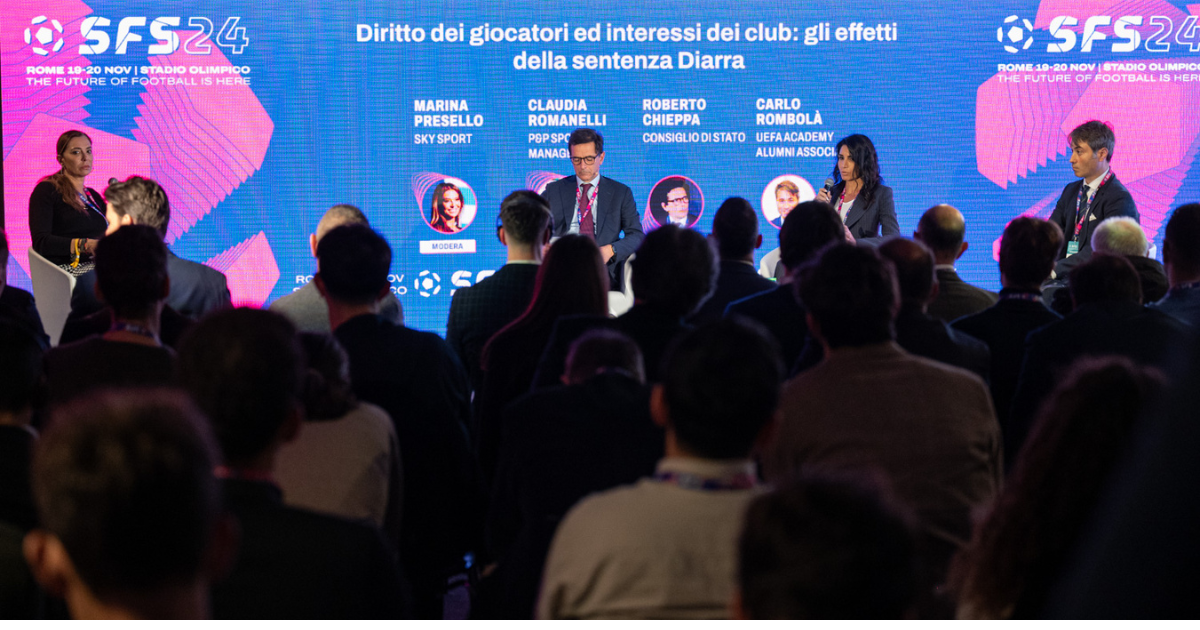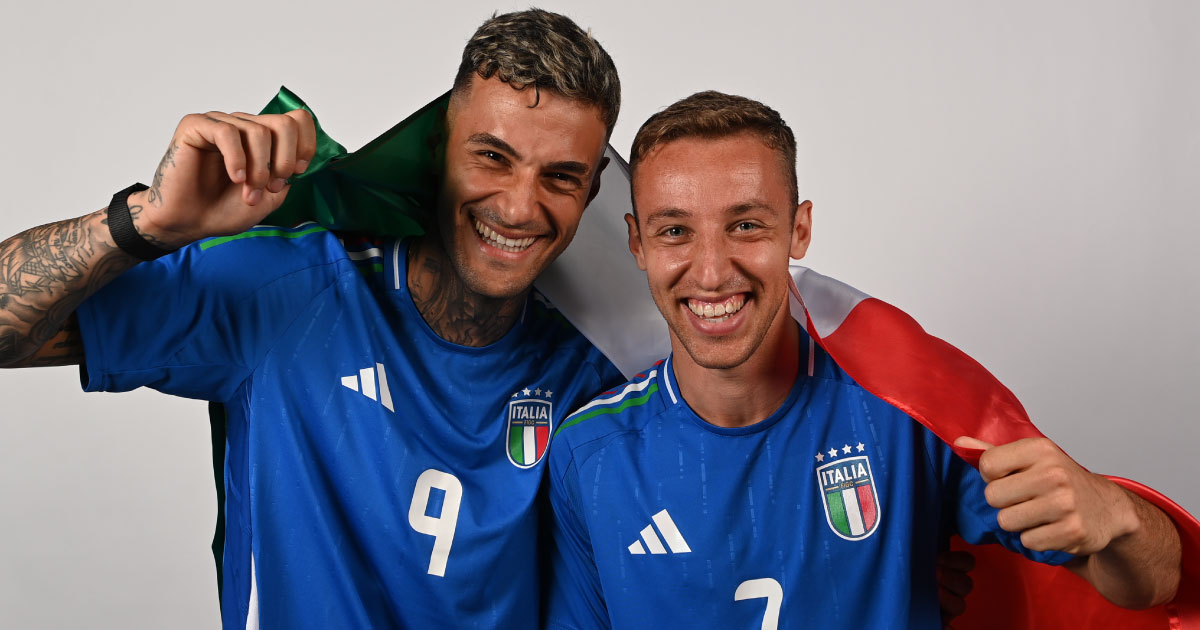Can a court judgement change the rules of the game?The panel “Players’ rights and club interests: the effects of the Diarra ruling” shed light on one of the most complex cases in modern sports justice, sparking new reflections on the balance between sports law and EU law. Moderated by Sky Sport journalist Marina Presello at SFS24, the panel featured Claudia Romanelli (P&P Sport Management), Roberto Chieppa (President of Section at Consiglio di Stato), and Carlo Rombolà (UEFA Academy Alumni Association).
Lassana Diarra, a former Lokomotiv Moscow player, is at the center of a case that began in 2014 and remains relevant today. After a dispute with the club, which led to a reduction in his salary, the player refused to attend training sessions. The club, citing article 17 of the FIFA Regulation, sought contract termination and compensation.
In 2015, the Court of Arbitration for Sport (CAS) ruled in favor of Lokomotiv, but the situation grew more complicated when the player attempted to transfer to the belgian club Charleroi. FIFA, applying article 17, held Charleroi and Diarra jointly liable for compensation amounting to €10.5 million. The case eventually reached the Court of Justice of the European Union (CJEU), which found article 17 incompatible with EU law, recognizing its conflict with the freedom of movement for workers and competition rules.
Roberto Chieppa suggested analyzing the legal case from a different perspective, stating: “The economic significance of the football industry makes the intersection between sports law and general law unavoidable. Football players are workers and, as such, are subject to European regulations”.
In some respects, the Diarra case recalls the landmark Bosman ruling of 1995, which revolutionized European football by allowing players within the EU to transfer freely at the end of their contracts and abolishing quotas for foreign players in EU clubs. However, during the panel, other precedents were also highlighted, such as the case of goalkeeper Morgan De Sanctis, who in 2007 secured unilateral release from Udinese under article 17, transferring to Sevilla with €2.5 million in compensation.
Carlo Rombolà added: “For the future, there are two possible scenarios: either the parameters of Article 17 will be redefined, or we will witness a profound change in the status quo. However, a complete overhaul is unlikely, given the shared nature of the agreements between FIFA, UEFA, and the European Commission”.
But what would happen if a similar case arose in women’s football? According to Claudia Romanelli, “As of today, it is unlikely, at least in Italy, due to economic and social reasons. Collaboration between clubs is much more evident in women’s football, with a less confrontational approach”.
The panel concluded with a reflection on the impact of court rulings on the world of football. On the one hand, sports regulations must adapt to general legal principles. On the other, it is essential for football to organize itself to face these challenges through solidarity-driven projects and innovative governance. As the President of Section at Consiglio di Stato emphasized: “It is essential to find a balance between sports and legal requirements because only with good governance can football continue to grow and thrive”.
In short, the Diarra case is not just a complex legal dispute but a symbol of the challenges modern football must tackle in an increasingly regulated global context.
The Diarra Case and Sports Justice: Football Between Courts and International Regulations
Can a court judgement change the rules of the game?The panel “Players’ rights and club interests: the effects of the Diarra ruling” shed light on one of the most complex cases in modern sports justice, sparking new reflections on the balance between sports law and EU law. Moderated by Sky Sport journalist Marina Presello at SFS24, the panel featured Claudia Romanelli (P&P Sport Management), Roberto Chieppa (President of Section at Consiglio di Stato), and Carlo Rombolà (UEFA Academy Alumni Association). Lassana
EURO2024, here is the rule that prohibits the main sponsor of the national team team
Within the FIFA regulations, also adopted by UEFA, there is a rule regarding technical equipment and what can be displayed on it. Sponsorships in the world of football began in the early 1970s thanks to the partnership between Jägermeister and Eintracht Braunschweig. This innovation forever changed the world of football, creating connections with various sectors that began to approach the football industry. Since then, a domino effect has involved all major European and global football organizations. However, this phenomenon mainly involved clubs and




